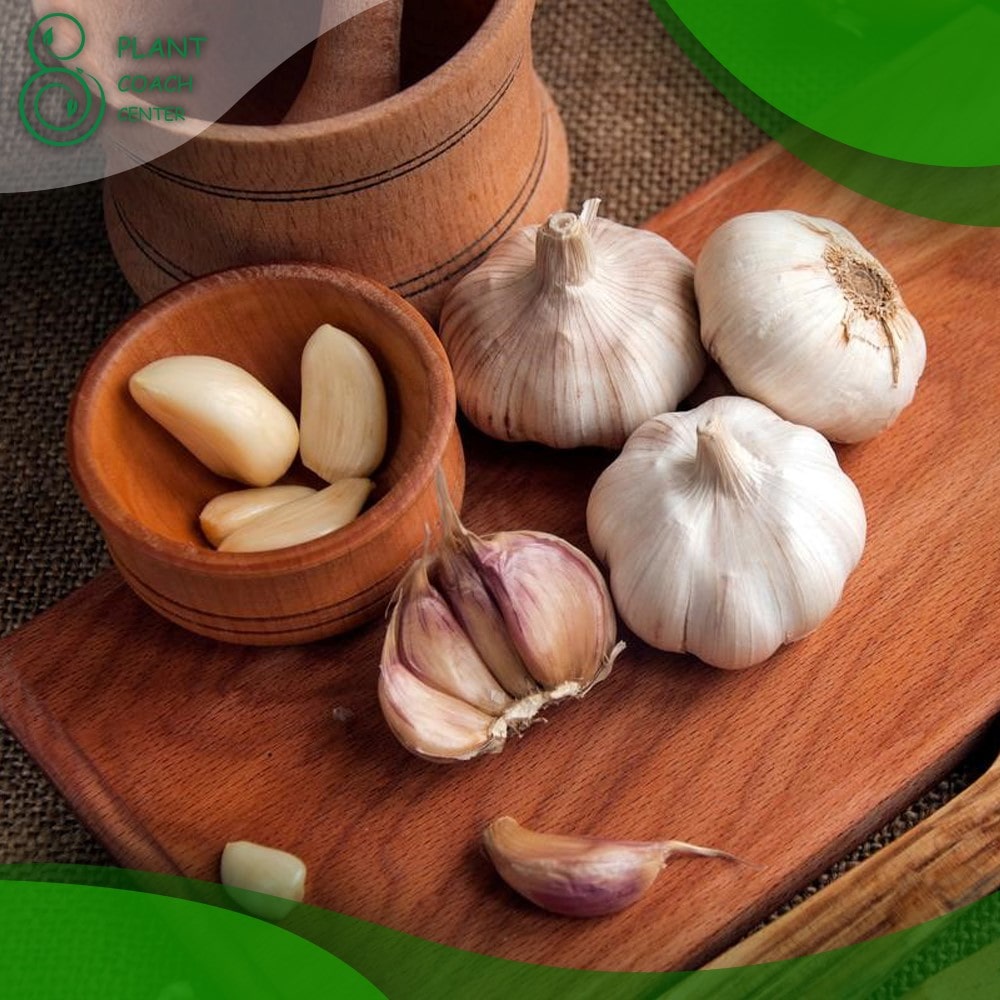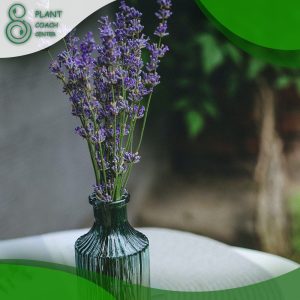When Can I Plant Garlic
Garlic is a popular crop known for its unique flavor and numerous health benefits. However, timing is crucial when it comes to planting garlic for successful growth and yield. In this article, we will discuss when to plant garlic and the various factors to consider for optimal growth and yield.
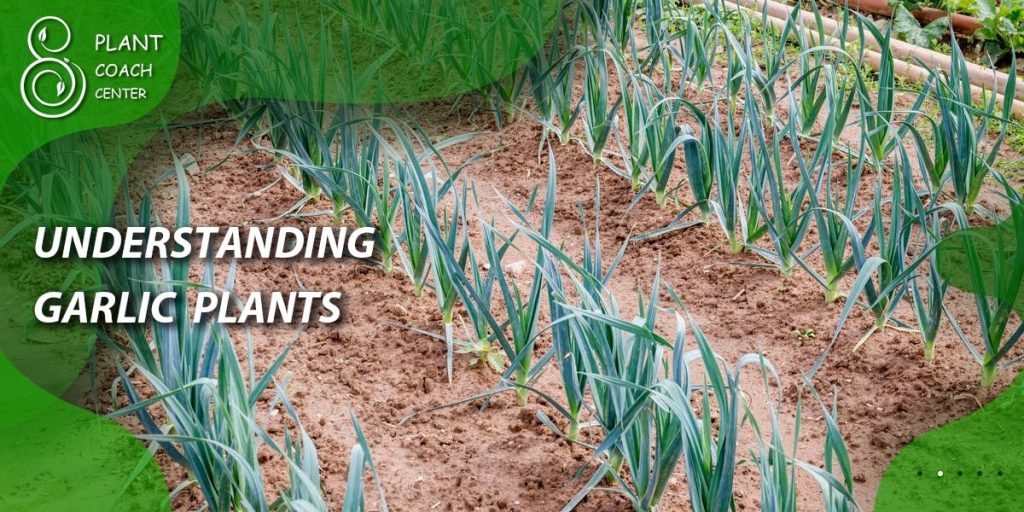
Understanding Garlic Plants
Before we delve into planting garlic, it’s important to understand the basics of garlic plants.
Overview of Garlic Plants
Garlic is a member of the onion family and is grown for its bulbs. Garlic plants have long, flat leaves and produce a flower stalk called a scape in the spring.
Types of Garlic Plants
There are two main types of garlic plants: hardneck and softneck. Hardneck garlic produces a woody stem and fewer, larger cloves, while softneck garlic produces a soft stem and more, smaller cloves.
Growing Conditions for Garlic
Garlic requires specific growing conditions for optimal growth and yield.
- Soil: Garlic prefers well-draining soil with a pH between 6.0 and 7.5.
- Water: Garlic needs consistent moisture, but overwatering can lead to rot.
- Sunlight: Garlic needs full sun for at least six hours a day.
- Temperature: Garlic grows best in cool to cold weather, with a temperature range of 50-70°F (10-21°C).
- Nutrients: Garlic needs nitrogen, phosphorus, and potassium for optimal growth and yield.
Importance of Timing in Planting Garlic
Planting garlic at the appropriate time is crucial for successful growth and yield. Garlic is a long-season crop that takes about 6-8 months to mature. The timing of planting garlic varies depending on several factors, including your climate, the type of garlic, and the desired harvest time.
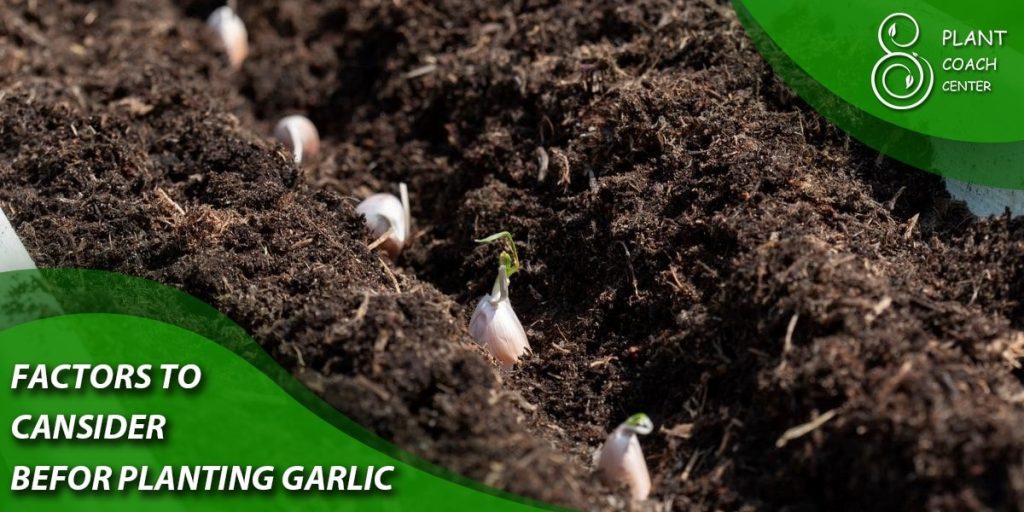
Factors to Consider Before Planting Garlic
There are several factors to consider before planting garlic to ensure optimal growth and yield.
Climate and Weather Patterns
Different garlic varieties have different temperature and climate requirements. It’s important to research the specific needs of the garlic you want to plant and choose the appropriate time to plant based on your local climate and weather patterns.
Soil Structure and Composition
Garlic requires well-draining soil with the right balance of nutrients. Soil pH is also important, as garlic prefers a slightly acidic soil.
Sunlight Requirements
Garlic needs full sun for at least six hours a day. Choosing the right location for planting is important for the success of your garlic.
Watering Needs
Garlic needs consistent moisture, but overwatering can lead to rot. It’s important to monitor soil moisture and adjust watering as needed.
Pests and Diseases
Different garlic varieties are susceptible to different pests and diseases. It’s important to research the specific issues that may affect your garlic and take preventative measures.
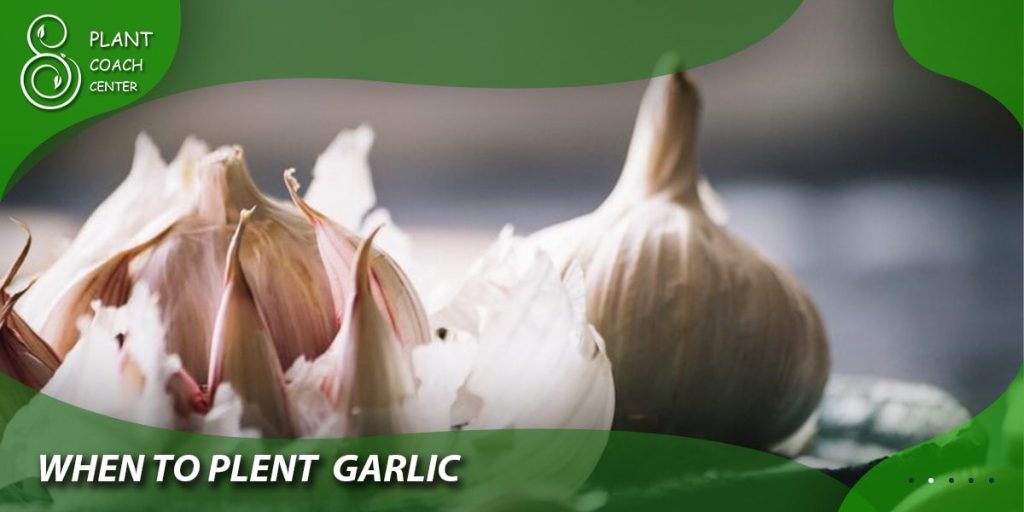
When to Plant Garlic: A Comprehensive Guide
Garlic can be planted in the fall or spring, depending on several factors.
Fall Planting: Pros and Cons
Fall planting is the most common time to plant garlic, as it allows the bulbs to establish roots before the winter. Here are some pros and cons of fall planting:
Pros
– Garlic planted in the fall will have a head start in the spring, leading to earlier harvests.
– Garlic planted in the fall will typically produce larger bulbs than garlic planted in the spring.
– Fall planting allows for better establishment of the root system before the onset of winter.
Cons
– Fall planting requires advance planning and preparation.
– Garlic planted in the fall may be more susceptible to rot if planted in poorly-draining soil or in areas with heavy rainfall.
Spring Planting: Pros and Cons
Spring planting is an option for those who missed the fall planting window or live in areas with milder winters. Here are some pros and cons of spring planting:
Pros
– Spring planting allows for greater flexibility in planting times.
– Garlic planted in the spring may be less susceptible to rot than garlic planted in the fall.
Cons
– Garlic planted in the spring will typically have a later harvest than garlic planted in the fall.
– Spring planting may result in smaller bulbs than fall planting.
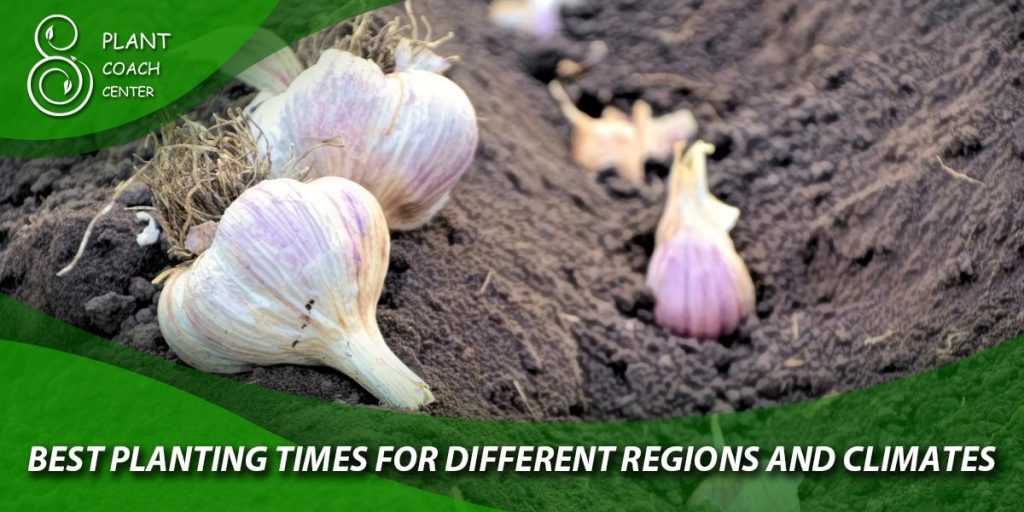
Best Planting Times for Different Regions and Climates
The best time to plant garlic varies depending on your region and climate. Here are some general guidelines:
– Fall planting: Late September to early November in colder climates, and October to early December in milder climates.
– Spring planting: Late March to early April in colder climates, and February to early April in milder climates.
Preparing for Planting
Proper preparation before planting garlic is crucial for optimal growth and yield. Here are some important steps to take before planting:
Soil Preparation
Garlic prefers well-draining soil with a pH between 6.0 and 7.5. Here are some tips for preparing your soil:
– Test your soil pH and adjust it if necessary.
– Amend your soil with compost or well-rotted manure to improve soil structure and add nutrients.
– Dig your planting bed to a depth of 8-10 inches to loosen the soil and aerate it.
Fertilization and Composting
Garlic needs nitrogen, phosphorus, and potassium for optimal growth and yield. Here are some tips for fertilizing and composting your garlic:
– Add a balanced fertilizer, such as a 10-10-10 formula, to your soil before planting.
– Side-dress your garlic with a nitrogen-rich fertilizer, such as blood meal or fish emulsion, in the spring.
– Consider adding compost or well-rotted manure to your soil to provide additional nutrients.
Seed Selection and Preparation
Choosing the right garlic cloves for planting is crucial for optimal growth and yield. Here are some tips for selecting and preparing your garlic seed:
– Choose large, healthy cloves with no signs of disease or damage.
– Separate the cloves from the bulb just before planting to prevent drying out.
– Soak your garlic cloves in a solution of water and baking soda for 15-20 minutes before planting to prevent fungal diseases.
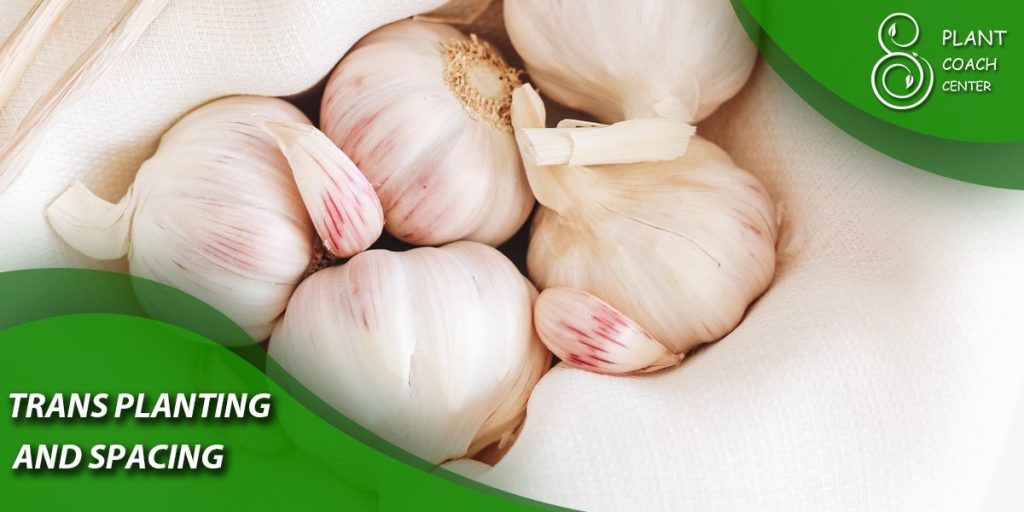
Transplanting and Spacing
Garlic cloves should be planted 2-3 inches deep and 4-6 inches apart. Here are some tips for transplanting and spacing your garlic:
– Use a dibber or trowel to make holes for your garlic cloves.
– Plant your garlic cloves with the pointed end facing up and the flat end facing down.
– Space your garlic cloves 4-6 inches apart in rows that are 12-18 inches apart.
Mulching and Weed Control
Mulching and weed control are important for maintaining soil moisture and preventing weed growth. Here are some tips for mulching and weed control:
– Apply a layer of mulch, such as straw or leaves, to your planting bed to retain soil moisture and suppress weed growth.
– Avoid using fresh grass clippings or other materials that may generate heat and damage your garlic.
– Hand-pull weeds or use a hoe or cultivator to remove them.
Common Garlic Problems and Solutions
Despite its hardy nature, garlic can be susceptible to a variety of pests, diseases, and environmental stressors. Here are some common garlic problems and solutions:
Pests and Diseases
Garlic is susceptible to several pests and diseases, including:
– Onion maggots: These small, white maggots burrow into the roots of garlic plants, causing stunted growth and yellowing leaves.
– Thrips: These tiny insects feed on garlic leaves, causing silver streaking and deformities.
– White rot: This fungal disease causes wilting, yellowing, and eventual death of garlic plants.
– Rust: This fungal disease appears as orange or brown spots on garlic leaves, eventually causing them to wither and die.
Here are some solutions for controlling pests and diseases in garlic:
– Practice crop rotation to prevent the buildup of pests and diseases in the soil.
– Use insecticidal soap or neem oil to control thrips and other pests.
– Use a fungicide to control fungal diseases like white rot and rust.
Environmental Stressors
Garlic can be susceptible to environmental stressors like heat, cold, and drought. Here are some solutions for dealing with environmental stressors:
– Provide adequate water during hot and dry periods.
– Shield garlic plants from extreme heat and direct sunlight.
– Mulch your planting bed to maintain soil moisture and temperature.
Nutrient Deficiencies
Garlic requires nitrogen, phosphorus, and potassium for optimal growth and yield. Here are some signs of nutrient deficiencies in garlic and how to address them:
– Nitrogen deficiency: Yellowing leaves and stunted growth. Address by adding a nitrogen-rich fertilizer or compost to the soil.
– Phosphorus deficiency: Purple or reddish leaves and poor root development. Address by adding a phosphorus-rich fertilizer or bone meal to the soil.
– Potassium deficiency: Yellowing or browning of leaf tips and margins. Address by adding a potassium-rich fertilizer or wood ash to the soil.
Maximizing Garlic Growth and Yield
Proper maintenance and care are crucial for maximizing garlic growth and yield. Here are some tips for maximizing garlic growth and yield:
Maintenance and Care
– Water your garlic regularly to maintain consistent moisture.
– Fertilize your garlic with a balanced fertilizer in the fall and a nitrogen-rich fertilizer in the spring.
– Remove any weeds or debris from your planting bed regularly.
Harvesting and Storage
– Harvest garlic when the leaves have turned yellow or brown and are starting to dry out.
– Carefully dig up garlic bulbs with a garden fork or trowel, being careful not to damage them.
– Allow garlic bulbs to dry in a warm, dry place for 2-3 weeks before storing.
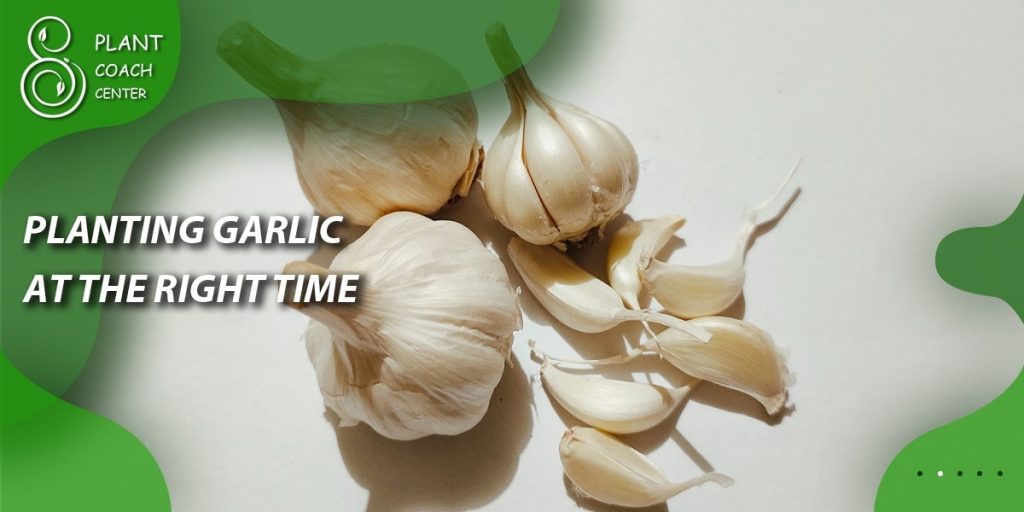
conclusion
In conclusion, planting garlic at the right time and under the right conditions is crucial for successful growth and yield. By following the tips and guidelines outlined in this article, you can ensure that your garlic thrives and produces healthy, flavorful bulbs.
When is the best time to plant garlic?
Plant garlic in the fall, ideally around 4 to 6 weeks before the ground freezes in your area.
Can garlic be planted in the spring?
Yes, garlic can be planted in the spring, but fall planting is generally recommended for better bulb development.
What are the signs that garlic is ready to be planted?
Garlic bulbs are ready to be planted when the cloves are plump and firm, and the outer skin is papery and dry.


